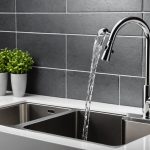Importance of Kitchen Island Positioning
The design of a kitchen island is crucial in enhancing your kitchen’s functionality, particularly for meal preparation. By strategically placing the island, it can significantly improve meal prep efficiency, allowing you to move seamlessly between tasks. Consider the kitchen layout: islands should be positioned in harmony with frequently used areas like the stove, sink, and refrigerator. This triangular setup facilitates a smoother workflow, reducing unnecessary steps and time during food preparation.
An easily accessible kitchen island plays a substantial role in promoting healthy cooking habits. When cookware and ingredients are within arm’s reach, the inclination to cook healthy meals increases. The accessibility of these essentials helps eliminate barriers to cooking at home, fostering an environment conducive to nutritious eating.
Moreover, an organized kitchen environment encourages better eating choices. An uncluttered and tidy workspace is inviting and inspires creativity and experimentation with healthy recipes. Maintaining such organization on the island helps in segregating tools and ingredients, which leads to a more streamlined cooking process.
Incorporating these principles into the kitchen island design not only boosts culinary efficiency but also supports healthier lifestyle choices by making the cooking process more accessible and enjoyable.
Have you seen this : Elevate your health: how a multi-layered fruit basket can transform your kitchen and boost daily fruit servings
Factors to Consider for Kitchen Island Placement
Designing an optimal kitchen involves thoughtful island positioning and space optimization. These considerations ensure efficiency and functionality within your kitchen layout.
Workflow and Movement
One primary aspect to evaluate is the kitchen work triangle, which includes the sink, stove, and refrigerator. By placing the kitchen island strategically within this triangle, you can minimize steps between key cooking zones, enhancing overall efficiency. Clear pathways allow for multitasking, making meal preparation seamless and enjoyable. Streamlining movement not only saves time but also creates a harmonious flow within the kitchen environment.
Accessibility and Functionality
For a kitchen to truly serve its users, accessibility and functionality are paramount. Consider the reach to essential tools and ingredients. Incorporating storage solutions such as drawers and shelves within the island can greatly enhance accessibility. It’s also important to design work surfaces that are inclusive, considering different heights and abilities. Ensuring everyone can comfortably use the kitchen fosters an inclusive space for all users.
Space and Layout Considerations
Finally, your kitchen’s dimensions play a crucial role in determining the appropriate island size. Balancing the island with the available kitchen space is essential to maintain an open floor plan. This balance permits freedom of movement, making the kitchen not only efficient but also a pleasant domain for both cooking and social gatherings.
Enhancing Meal Prep Through Organization
Organizing your kitchen effectively is key to improving your meal prep experience. With efficient kitchen organization strategies, you can transform your cooking space into a smooth-working, stress-free area.
Firstly, consider grouping kitchen tools based on their usage to make access simpler. Store similar items together; for instance, keep knives near cutting boards, or place pots close to the stovetop. This systematic organization prevents unnecessary clutter and enhances workflow.
A clutter-free kitchen can significantly impact meal prep speed. By reducing excess items and only keeping essentials, you eliminate the time spent rummaging through drawers and cabinets. This streamlined setup means more time dedicated to creating nutritious meals.
Using an island as a meal prep station can further elevate your cooking practices. The island offers a central workspace that can store necessary tools and ingredients within arm’s reach. Integrating pull-out trays or rotating shelves maximizes space and accessibility, promoting healthy cooking practices.
Finally, label storage containers to maintain this system. Knowing where everything belongs helps you locate items quickly, encouraging consistency in your meal prep routine. These actionable tips not only improve efficiency but inspire a positive attitude toward cooking healthy meals regularly. Remember, a well-arranged kitchen paves the way for creativity in your culinary journey.
Real-Life Examples of Effective Kitchen Island Use
Kitchen islands are a significant component in modern kitchen designs, offering both aesthetic and functional value. They are pivotal in practical kitchen layouts enhancing meal prep efficiency by providing additional workspace. Let’s explore real-world examples where kitchen islands have made a substantial difference.
Case Studies of Kitchen Renovations
In several successful kitchen remodels, homeowners have found that strategic island placement can transform their cooking habits. For example, positioning the island close to the stove and sink creates a ‘kitchen triangle’, minimizing unnecessary movement. Feedback from homeowners often mentions this layout as key to more efficient meal preparation. Lessons from these innovative kitchens highlight the importance of integrating appliances into the island, offering both accessibility and space-saving benefits.
Visual Inspiration and Layout Diagrams
To better understand these concepts, various kitchen island layouts can be compared through images and diagrams. Effective workflow designs typically include wide aisles for easy movement, promoting a seamless cooking experience. Interior designers offer layout tips, emphasizing symmetry and balance, which not only improve functionality but also enhance meal efficiency.
Testimonials from Home Cooks
Home cooks frequently report that island positioning has vastly improved their overall cooking experience. Many credit islands with the adoption of healthier meal prep practices post-renovation. Culinary experts suggest that such setups allow for more organised preparation, reducing clutter and making cooking a more enjoyable task.











